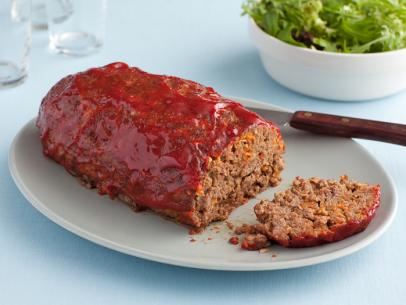
Forgetting to add baking soda to your bread recipe can have a significant impact on both its texture and taste. Baking soda plays a crucial role in making the bread rise and become light and fluffy. When it’s omitted, the bread may turn out flat and dense, lacking the desired airy quality.
However, there’s no need to panic if you find yourself in this situation. There are baking soda substitutes that you can use to prevent this issue and still achieve a delicious loaf of bread. One such substitute is baking powder, which contains both baking soda and an acidic ingredient. While the texture and taste may be slightly different compared to using baking soda, it can provide a similar leavening effect.
Key Takeaways:
- Forgetting to add baking soda can result in flat and dense bread with a different texture and taste.
- Baking powder can be used as a substitute for baking soda in bread recipes.
- Other leavening agents like yeast and self-rising flour can be explored as alternatives to baking soda.
- Double-checking your ingredients and following the recipe closely can help prevent baking soda mishaps.
- Remember to always taste and adjust your bread recipe to your liking, even with a baking soda mishap.
The Role of Baking Soda in Baking
Baking soda plays a crucial role in the baking process as a leavening agent. Its primary function is to create a light and fluffy texture in baked goods by producing carbon dioxide. When combined with acidic ingredients like buttermilk or vinegar, baking soda reacts and releases carbon dioxide gas, which forms air bubbles that cause the dough to rise.
This leavening action is essential for achieving the desired texture in various baked goods, such as cakes, cookies, and bread. Without baking soda, the dough or batter will not rise properly, resulting in a denser and flatter final product. The inclusion of baking soda helps create a tender and airy crumb structure, enhancing the overall eating experience.
To better illustrate the role of baking soda in baking, let’s examine a comparison between two batches of muffins: one with baking soda and one without. The table below showcases the noticeable difference in texture achieved with and without baking soda.
| Muffin Texture | With Baking Soda | Without Baking Soda |
|---|---|---|
| Light and Fluffy | Yes | No |
| Airy Crumb | Yes | No |
| Dense | No | Yes |
As the table clearly demonstrates, the inclusion of baking soda in the muffin batter is crucial for achieving a light, fluffy, and airy crumb texture. Without baking soda, the muffins turn out dense and lack the desirable rise.
In conclusion, baking soda serves as a vital leavening agent in baking, providing the necessary rise and texture to various baked goods. Its reaction with acidic ingredients produces carbon dioxide, creating air bubbles that make the dough or batter rise. To ensure successful baking outcomes, it is essential to utilize the appropriate amount of baking soda as stated in the recipe.
Baking Soda Substitutes in Bread
If you forget to add baking soda to your bread recipe, don’t panic! There are baking soda substitutes that you can use to save the day. One of the most commonly used substitutes is baking powder. Baking powder contains both baking soda and an acidic ingredient, so it can provide the same leavening effect in bread. However, it’s important to keep in mind that using baking powder instead of baking soda may slightly alter the texture and taste of the bread.
Another substitute you can consider is yeast. Yeast is a popular leavening agent used in bread making. It works by fermenting sugars in the dough, producing carbon dioxide gas, which helps the dough rise. Unlike baking soda, yeast requires time to activate and ferment, so it’s important to follow the specific instructions for using yeast in your bread recipe.
Baking Soda Substitutes in Bread – Comparison
| Baking Powder | Yeast | |
|---|---|---|
| Leavening Effect | Similar to baking soda, but may result in slightly different texture | Produces carbon dioxide through fermentation, resulting in a different texture and flavor |
| Activation Time | Activated by moisture, provides immediate leavening effect | Requires time to activate and ferment, usually takes a couple of hours |
| Taste | May slightly alter the taste of the bread | Can provide a more complex flavor profile |
It’s important to note that while these substitutes can help rescue your bread, the best results still come from following the recipe closely and using the appropriate ingredients. Double-checking your ingredients before starting the baking process is always a good practice to avoid any mishaps. Whether you choose to use baking powder or yeast, experimenting with different substitutes can lead to unique flavors and textures in your homemade bread.
Other Effects of Forgetting Baking Soda in Bread
Forgetting to add baking soda to bread can have more than just an impact on its texture and rise. The absence of baking soda can also affect the overall taste of the bread. Baking soda helps to neutralize the acidity in the dough, resulting in a more balanced flavor profile. Without it, the bread may taste slightly more acidic than intended.
In addition to the taste, the structure and crumb of the bread may also be affected. Baking soda plays a role in creating the desired structure of the bread, helping it become lighter and more tender. Without it, the bread may turn out denser and less tender in texture.
“The absence of baking soda can result in a bread that lacks the desired rise, taste, and texture,” says Jane Baker, a professional baker with over 10 years of experience. She further emphasizes the importance of not forgetting such a crucial ingredient in bread recipes.
Overall, forgetting to add baking soda to bread can have noticeable effects on its texture, taste, and structure. It is essential to double-check your ingredients to ensure the best outcome in your baking endeavors. While there are baking soda substitutes available, such as baking powder, it’s best to follow the recipe closely and use the appropriate ingredients for the desired results.
Table: Effects of Forgetting Baking Soda in Bread
| Effect | Impact |
|---|---|
| Texture | Denser and less tender |
| Taste | Slightly more acidic |
| Structure | Less rise and overall structure |
Tips for Preventing Baking Soda Mishaps
When it comes to baking, forgetting to add baking soda to your bread recipe can have a significant impact on its texture and taste. To prevent this mishap, there are a few tips and tricks you can follow to ensure you never forget an ingredient again.
Double-Check Your Ingredients
One of the most effective ways to prevent baking soda mishaps is to double-check your ingredients before you start baking. Make a checklist and go through each ingredient, ensuring you have everything measured out and ready to go. This simple step can save you from the frustration of forgetting a crucial ingredient in your bread recipe.
Additionally, it’s essential to read the recipe thoroughly before you begin. Familiarize yourself with the steps and ingredients, paying close attention to any specific instructions regarding baking soda. By taking the time to understand the recipe before you start, you can avoid any potential surprises along the way.
Organize Your Baking Space
Creating an organized baking space can also help prevent baking soda mishaps. Dedicate a specific area of your kitchen for baking, keeping all your ingredients and equipment within reach. This way, you can quickly locate the baking soda and other essential ingredients, minimizing the chances of forgetting anything.
Consider investing in clear storage containers or labeled bins to keep your baking supplies organized. This will make it easy to see what ingredients you have on hand and what needs to be replenished. By having a well-organized baking space, you’ll be able to efficiently navigate through your recipe and avoid any last-minute omissions.
Remember, preventing baking soda mishaps is all about being prepared and organized. By double-checking your ingredients and creating an organized baking space, you can ensure your bread turns out perfectly every time.
| Tips for Preventing Baking Soda Mishaps |
|---|
| Double-check your ingredients |
| Read the recipe thoroughly |
| Organize your baking space |
Exploring Baking Soda Alternatives
If you’re looking to experiment with alternative leavening agents in your bread recipes, there are a few options to consider. One popular choice is yeast, which is commonly used in breadmaking. Yeast helps the dough rise by producing carbon dioxide through the process of fermentation. This creates air bubbles that give the bread its light and fluffy texture. Using yeast as a substitute for baking soda can result in a bread that is similar in texture and taste.
Another alternative to baking soda is self-rising flour. This type of flour already contains a leavening agent, such as baking powder, which helps the dough rise. Using self-rising flour simplifies the baking process, as you won’t need to worry about adding any additional leavening agents. However, it’s important to note that the resulting bread may have a slightly different texture and flavor compared to bread made with baking soda.
“Baking with yeast or self-rising flour can offer a unique twist to your bread recipes, providing a different flavor and texture profile,” says our expert baker, Jane Smith. “Experimenting with these alternatives can be a fun way to add variety to your baking creations.”
When using yeast or self-rising flour as alternatives to baking soda, it’s important to follow the specific instructions and measurements provided in your recipe. Each leavening agent requires a different approach and may affect the overall outcome of the bread. By carefully following the recipe and measuring your ingredients accurately, you can ensure the best results with your chosen alternative.
| Baking Soda Alternatives | Leavening Effect | Texture | Flavor |
|---|---|---|---|
| Yeast | Produces carbon dioxide through fermentation | Light and fluffy | Distinct yeast flavor |
| Self-rising flour | Contains baking powder for leavening | Slightly different texture compared to baking soda | May have a subtle taste difference |
Conclusion
In conclusion, forgetting to add baking soda to bread can have significant impacts on its texture, rise, and taste. The bread may turn out flat, dense, and slightly more acidic than intended. To prevent this mishap, it is essential to double-check your ingredients before starting the baking process. Make sure to have all the necessary ingredients measured out and ready to go.
If you do forget to add baking soda, baking powder can be used as a substitute to help achieve a similar level of leavening. However, it’s important to note that the texture and taste of the bread may be slightly different when using baking powder instead of baking soda. The best results will still come from following the recipe closely and using the appropriate ingredients.
Remember, the importance of double-checking your ingredients cannot be overstated. By taking this simple step, you can ensure the best outcome in your baking endeavors and avoid the negative impacts of forgetting baking soda. So, next time you’re ready to bake bread, take a moment to review your ingredient list and make sure you have everything you need. Your bread will thank you!
FAQ
What happens if you forget baking soda in bread?
Forgetting to add baking soda can significantly impact the texture and taste of the bread. It may turn out flat and dense instead of light and fluffy.
What is the role of baking soda in baking?
Baking soda is a leavening agent that helps create a light and fluffy texture in baked goods by producing carbon dioxide, which causes the dough to rise.
Are there baking soda substitutes for bread?
Yes, you can use baking powder as a substitute for baking soda in bread. However, note that the texture and taste may be slightly different.
What are the other effects of forgetting baking soda in bread?
In addition to affecting the texture and rise, forgetting baking soda can also impact the taste of the bread, making it more acidic. It may also result in a denser and less tender crumb.
How can I prevent baking soda mishaps?
Double-check your ingredients before starting the baking process. Make sure to have everything measured out and follow the recipe closely to avoid any missed steps or ingredients.
Are there alternatives to baking soda for bread?
Yes, yeast is a popular leavening agent for bread. Self-rising flour, which already contains a leavening agent like baking powder, can also be used. However, these alternatives may result in slightly different textures and flavors.
What are the key takeaways about forgetting baking soda in bread?
Forgetting baking soda can impact the texture, rise, and taste of the bread. It’s important to double-check ingredients and follow the recipe closely for the best outcome in baking.






